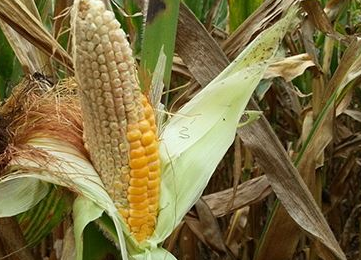The phenomenon of corn defoliation is manifested in various forms in the field. One is that the side is not true, that is, there is no grain on the side of the ear from the base to the top, and the panicle is curved on the side of the multi-directional deficiencies; the second is that the whole ear has few grains. It is scattered on the ears; the third is the bald tip, that is, the top of the ear is small, white or yellowish white, and the severe bald tip can account for more than half of the whole ear, which is the main form of corn deficiency. First, the main reason for corn baldness : The cause of corn abrupt granules is closely related to the variety, soil, nutrition and fertilizer, climate, cultivation management, and the severity of pests and diseases . 1. Variety factors: Due to the different adaptability of different varieties to the external environment and the resistance to adverse environments, when the adverse external environmental conditions exceed the adaptation range of the varieties, it is prone to alopecia. 2. Soil factors: sandy soil has high salinity, low sorghum and easy sorghum, shallow tillage layer, poor water storage and fertilizer retention capacity, thin soil, and aggravation of bald tip. 3. nutritional factors: NPK properly, not applied less fertilizer and organic fertilizer applied, especially in soil phosphorus, boron deficiency; or corn growth in the late short supply of water, especially in dry maize flowering filling stage De-fertilization affects the manufacture and operation of organic matter, making corn silking later, reducing pollen in the field, shortening the life of pollen and filament, and causing corn abdomen to lack grain. 4. Climatic factors: The continuous drought in the middle stage of corn growth causes multiple rolling leaves, or high temperature and dry weather during flowering, insufficient soil water supply, affecting the development of male and female ears in corn; or cloudy and rainy when corn is loose, affecting normal flowering Pollination; or pollination when there is no wind pollination, can cause baldness and lack of grain. 5. Management factors: extensive management, or excessive planting density, resulting in poor ventilation and light transmission in the field, insufficient light, weak photosynthesis of plants, reduced organic matter synthesis, affecting the development of male and female ears, causing baldness and lack of grain. 6. Pest factors: The occurrence of various diseases of corn can affect the normal growth and development of corn, resulting in poor growth of corn, especially when corn aphids begin to occur in large quantities during corn stagnation, causing corn to fail to flower pollination normally, resulting in alopecia grain. Second, prevention measures 1. Agricultural measures: (1) Planting excellent varieties: According to the local climate characteristics and cultivation conditions, select and plant varieties with strong resistance to disease, insects and adaptability. (2) Improve soil and enhance soil water retention and fertilizer retention. It is recommended to use compost and deep tillage and intermediate tillage techniques to improve the soil structure, promote the growth and development of corn, and enhance its resistance to adverse external environment. (3) reasonably administered fertilizer: Adding organic fertilizer, nitrogen, phosphorus, potassium reasonable proportion, in particular to prevent the lack of field and boron phosphate; in water supply, to prevent drought damage and waterlogging, after jointing reproductive organs Exuberant, the water supply should be timely and appropriate to promote the development of the male and female ears. (4) Strengthen management: reasonable close planting. Create good ventilation and light transmission conditions, meet the light requirements of the middle and upper leaves, promote the development of the male and female ears; strengthen the technique of weeding and weeding, especially the soil after jointing, can enhance the permeability of the soil and promote the development of maize roots; row cultivation techniques to improve air and light conditions of the field. Artificial assisted pollination technology. 2. Prevention of pests and diseases (1) Prevention and treatment of various leaf spot diseases In the middle and late stages of corn growth, when corn leaf spot disease occurs, 50% methyl thiophanate WP 800 times solution or 50% carbendazim WP 800 can be used. The liquid is sprayed and controlled. (2) Prevention and control of corn mash: At the end of corn heart leaf, 3% of carbofuran granules can be used for pinching; or after corn mash, 40% of omethoate emulsifiable concentrate 1000 times, 50% of monocrotophos Spraying 800 times of emulsifiable concentrate and 10% of imidacloprid wettable powder 3000 times. Fruits And Vegetables,Fresh Fruits And Vegetables,Fresh Fruit And Veggies,Fresh Vegetables Xi'an Gawen Biotechnology Co., Ltd , https://www.agolyn-bio.com